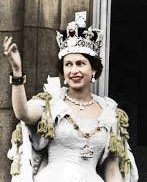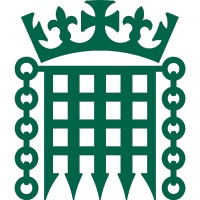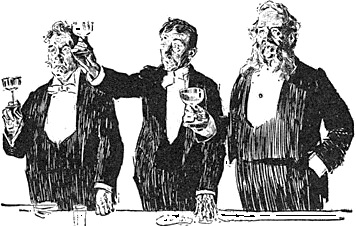Once Again, Neil Armstrong's background observations are invaluable:
 Queen Elizabeth the Second’s accession on the 6th February 1952, saw the United Kingdom transformed beyond recognition. Living standards, the environment, technology, transport, politics at home and abroad, social norms and attitudes, had all changed in a way that had rivalled the effects of the Industrial Revolution. While the dawn of this new epoch was a time of national pride, the humble realities of everyday life could not be ignored in Hull, still pockmarked by bomb damage from the Second World War. The NHS was still in its infancy; in 1952 a one shilling charge had been introduced for prescriptions. The first zebra crossings were only a year old, and less than a third of all journeys were made by car. Britain would have to wait until the end of the decade for its first motorway.
Queen Elizabeth the Second’s accession on the 6th February 1952, saw the United Kingdom transformed beyond recognition. Living standards, the environment, technology, transport, politics at home and abroad, social norms and attitudes, had all changed in a way that had rivalled the effects of the Industrial Revolution. While the dawn of this new epoch was a time of national pride, the humble realities of everyday life could not be ignored in Hull, still pockmarked by bomb damage from the Second World War. The NHS was still in its infancy; in 1952 a one shilling charge had been introduced for prescriptions. The first zebra crossings were only a year old, and less than a third of all journeys were made by car. Britain would have to wait until the end of the decade for its first motorway.
Without question, Freemasonry expanded in the immediate Post-War period, peaking to a membership close on 400,000, due in part perhaps to the desire to continue the camaraderie experienced by those who had served in the armed forces.
Even though during the Twentieth Century Freemasonry had come under attack by dictators, not least in Nazi Germany. Masonry had been banned, members hunted down, imprisoned, and often eliminated. The peace that followed the war was still rife with difficulties. Masonry was suppressed in Portugal, and in Franco’s Spain. Hungary and Romania followed suit. In the following decades, the 1960’s saw Indonesia impose a total ban, as did Pakistan in 1972. The Ayatollahs of Iran interposed in 1979.
 n England, ecclesiastical criticisms had been periodically raised. Interest had been expressed about the role of Freemasonry in the police force and judicial system. The matter was deemed important enough to warrant scrutiny by the House of Commons Home Affairs Committee. No skeletons were unearthed, although Lodge Secretaries still had to submit,(under the Unlawful Societies Act of 1799 - see page 1), Lodge name, places, and times of meetings together with the names of the members which had to be annually registered with the local Clerk to the Justices of the Peace. This continued until 1967 when the Act was repealed by a section of the Criminal Justice Act, which meant that those annual returns to the authorities ceased.
n England, ecclesiastical criticisms had been periodically raised. Interest had been expressed about the role of Freemasonry in the police force and judicial system. The matter was deemed important enough to warrant scrutiny by the House of Commons Home Affairs Committee. No skeletons were unearthed, although Lodge Secretaries still had to submit,(under the Unlawful Societies Act of 1799 - see page 1), Lodge name, places, and times of meetings together with the names of the members which had to be annually registered with the local Clerk to the Justices of the Peace. This continued until 1967 when the Act was repealed by a section of the Criminal Justice Act, which meant that those annual returns to the authorities ceased.
This decade saw the boom in the conviviality of the Festive Board, wining, dining, toasts, and speeches together with smoking were the order of the day. Many members drank port and sherry at the lodge, while other intrepid drinkers preferred whisky. The Lodge Steward, usually one of the recent new members put in charge of the bar, would have had a baptism of fire trying to cater for everyone’s needs. The stewards would also wait upon their senior Brethren at table. Dining numbers could be between fifty and a hundred Brethren.
Then, Installation nights could consist of twelve or more toasts including individual toasts to the Queen and the Craft, the Army, Navy, and Reserved Forces, and, of course, the Ladies.
 The Master might also ‘take wine’ with a person or persons. An unwise mason having partaken somewhat enthusiastically of all those toasts might well have difficulty recalling where he lived and be greeted by his better half waiting like Tam O’ Shanter’s wife ‘Gathering her brows like a gathering storm, Nursing her wrath to keep it warm.’
The Master might also ‘take wine’ with a person or persons. An unwise mason having partaken somewhat enthusiastically of all those toasts might well have difficulty recalling where he lived and be greeted by his better half waiting like Tam O’ Shanter’s wife ‘Gathering her brows like a gathering storm, Nursing her wrath to keep it warm.’
Masons would have to wait for more than a year after the Queen’s Coronation before the rationing of meat had ended. A more modest menu would be enjoyed, gone would be the birds of yesteryear such as lark, plover, wild duck, and partridge. Nor would the fish dishes of turbot, eel, whiting, and oysters that once graced the Victorian masonic table be seen again.
--ooOoo--
The Most Hon Lawrence Aldred Mervyn Earl of Ronaldshay (later 3rd Marquess of Zetland) was appointed Provincial Grand Master in 1956.
In the same year W Bro A D Holder presided as WM of the Minerva Lodge for the second time, having previously taken the Chair in 1932. During his year, the by-laws were amended, resolving that the Lodge would meet only once a month, on the second Wednesday in the months of January to July and in December, and that there should be no August meeting.
In 1957 the wall behind the Senior Warden's Chair was found to be bulging badly. It stuck out like an installation belly. It was declared unsafe, and it couldn’t be permanently shored up like many war damaged buildings round the city because of traffic regulations. Much of Hull was still undergoing repair afeter the ravages of the war, and it is perhaps surprising that the Lodge at Dagger Lane had not suffered more damage.
The wall was seven inches out of plumb at the bottom, and 5½ inches out of plumb at the top. Also, it was only nine inches, or one brick in thickness. The 1957 Building Regulations required eighteen inches as a minimum.
The City Engineer wouldn’t let the Brethren build the extra nine inches outside the building as this would reduce the pavement. So the experts were called in.
Mr Harry Andrew, Fellow of the Royal Institute of British Architects, came up with another solution to deal with the bulge. He suggested that the lower half of the wall be brought up to the level of the Temple floor within the building with eighteen-inch-thick brickwork, and the Lodge Room wall remain at nine inches thick. But because the corners of the room are circular, they could conceal eighteen-inch-thick pillars of brickwork within the Temple, and the brickwork between the pillars enforced with steel mesh in the mortar joints for additional strength. The upper wall would be strong, sturdy and supported.
That’s what happened. The Lodge Room was propped up from ground level. The roof and ceiling were carefully secured. The ornamental columns and the cornices on the wall were removed – fortunately they were found to be made of wood, not plaster, so this wasn’t difficult. The organ and furniture were carefully covered with dust sheets.
Outside, scaffolding held up a gantry and platform the full width of the street, with space underneath for traffic to pass. The wall was removed brick by brick, and the stonework round the window carefully preserved for refixing afterwards. The bricks were removed down to the foundations, where a foundation stone was discovered in the north-east corner of the building. This has been fashioned into the rough and perfect ashlars now in use, by command of the then WM, W B A J G Healey.
The wall was rebuilt, plumb, and restored inside with the columns, the cornices and the honours boards replaced.
Circumstances demanded change – the Brethren embraced the necessity, and the wall is stronger than before, and safe. Moreover, it had cost less than anticipated - the original estimate had been between £1500 and £2000, and the final figure was only £1000, so the saving was used for redecoration of the Temple. (Tenders were accepted for £285 for artist's work, and £456/10/- for painting the Temple.)
All Minerva Lodge meetings from June to October inclusive were held in the Wellington Rooms, Beverley Road, by kind permission of the Humber Lodge whilst the work was completed.
The official re-opening was in September 1959, an auspicious occasion to which Grand and Provincial Grand Officers were especially welcomed, and tribute was paid to W Bro G E Stephenson who had supervised the alterations and to all who had worked so diligently in ensuring that the Temple was restored to its original splendour. W Bro Stephenson had been appointed as Lecture Master in 1951. He prepared a "History of the Reconstruction of the Temple" and printed copies were made available to all the Brethren.
--ooOoo--

